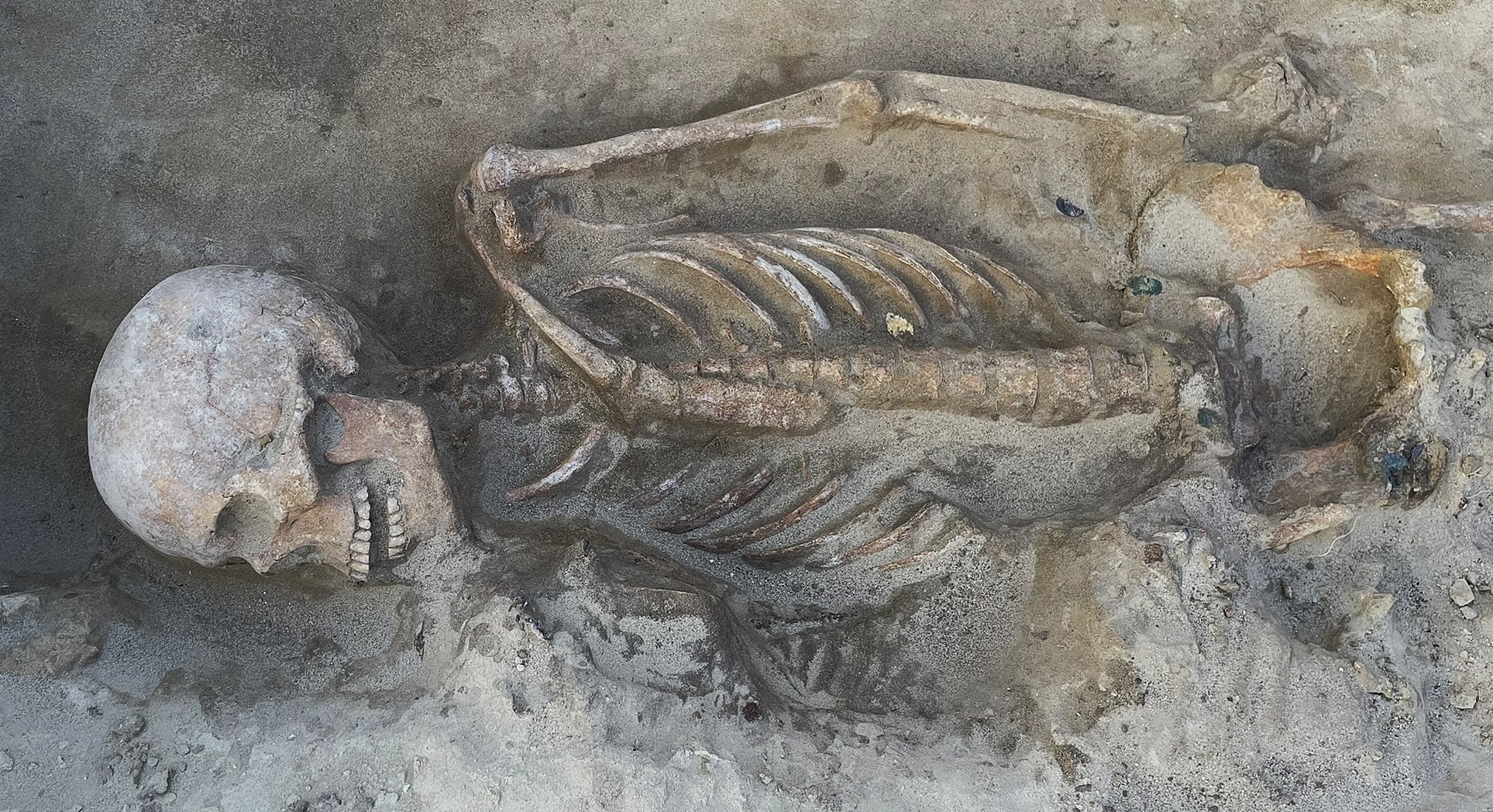Gruesome Tale: Why Wasps Live Inside Zombie Ladybugs

If a ladybug's life were a horror film, this is how it would start: Scary string music. A close-up of the green-eyed face of a wasp. The sudden pierce of a stinger. The screen goes dark.
Next, an establishing shot of our ladybug hero, sitting placidly on a leaf. Suddenly, the sky clouds over. Something orange and grubby begins to poke from the ladybug's abdomen. Audience members cover their eyes, expecting a quick, gruesome end for the black-and-red insect. But it's not that easy. Instead of dying, the ladybug survives as a wasp larva emerges from its abdomen and begins to weave a cocoon between the ladybug's legs. That's right: The ladybug is a zombie.
This sordid tale isn't fiction for many ladybugs that fall victim to the parasitical wasp Dinocampus coccinellae. Now, a new study reveals why the wasps use ladybugs as incubators. It turns out that the zombie ladybugs keep predators away from the wasps' vulnerable larva, increasing the likelihood that they survive to become full-fledged wasps.
The research, published today (June 21) in the journal Biology Letters, finds that this protection comes at a cost: Larva that cocoon themselves to a living ladybug, as opposed to a dead one or to none at all, can expect fewer eggs of their own when they emerge as wasps. This suggests that the same resources the wasps use to develop their eggs are also used to control the zombie ladybug. [Read: The 10 Most Disgusting, Diabolical Parasites]
Ladybug horror
The wasps' parasitical ways have been long noticed, and they aren't unique in the insect world. The parasitic wasp Hymenoepimecis argyraphaga, for example, lays its eggs in the spider Plesiometa argyra. The larvae then eat their way out of their host.
Nor is mind control very extraordinary for parasites. Before it dies, an infected P. argyra spider is compelled to build its web in a good location for a wasp cocoon. Zombie ants infected by a certain fungus wander around the forest until high noon, when they anchor themselves to a leaf vein with their jaws. At sunset, the ants die as the fungus sends a stalk shooting through the tops of their heads. [Mind Control: Gallery of Zombie Ants]
Get the world’s most fascinating discoveries delivered straight to your inbox.
But University of Montreal graduate student Fanny Maure and her colleagues noticed that even after D. coccinellae larvae burrow their way out of ladybugs' bellies, the ladybugs stay alive, partially paralyzed but twitching occasionally. They suspected that the living ladybugs might be somehow protecting their uninvited cargo.
To test the idea, the researchers reared more than 4,000 ladybugs in the lab and let wasps lay their eggs in the unfortunate insects. They then waited for the larvae to emerge and spin their cocoons.
Ladybug bodyguard
Once the larvae were out, the researchers split the zombie ladybugs and the larvae into three groups. In the first, they removed the ladybug from the cocoon, leaving the developing cocoon alone. In the second, they left the cocoon on the ladybug, but crushed the ladybug's head to kill it. The third group was left as it was, with a developing wasp attached to a living ladybug.
Then, they exposed all three groups of cocoons to green lacewings, an insect predator that loves to chow down on vulnerable wasp larvae. Each predator was allowed 15 minutes alone with a cocoon as the researchers recorded how often the lacewings were successful in snagging a larval meal.
They found that of the cocoons protected by living ladybugs, only about 35 percent got eaten. When cocoons were left alone or attached to dead ladybugs, in contrast, between 85 and 100 percent fell prey to the lacewings.
The study also found that the longer the ladybug survived with the cocoon attached to it, the less fertile the newly emerged wasp was likely to be, suggesting the developing wasp shares its resources with its host. Makes sense, as the more resources the ladybug has before a larva hatches out of its abdomen, the longer it lives to protect the larva in the cocoon.
More research is needed to find out whether the wasps develop more eggs later in life to compensate for sharing their resources with their zombie hosts, Maure wrote. But the study also turned up another horrifying curiosity about zombie ladybugs: About 25 percent of the ladybugs survived the parasite process and went about their lives once the wasp larva was gone. Now there's a horror movie with the potential for a happy ending.
You can follow LiveScience senior writer Stephanie Pappas on Twitter @sipappas. Follow LiveScience for the latest in science news and discoveries on Twitter @livescience and on Facebook.

Stephanie Pappas is a contributing writer for Live Science, covering topics ranging from geoscience to archaeology to the human brain and behavior. She was previously a senior writer for Live Science but is now a freelancer based in Denver, Colorado, and regularly contributes to Scientific American and The Monitor, the monthly magazine of the American Psychological Association. Stephanie received a bachelor's degree in psychology from the University of South Carolina and a graduate certificate in science communication from the University of California, Santa Cruz.



